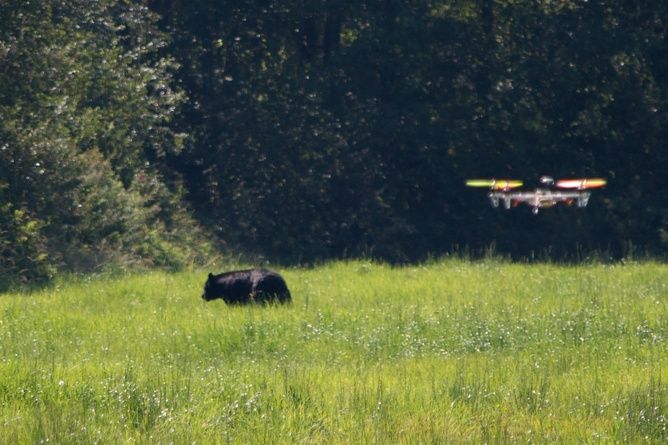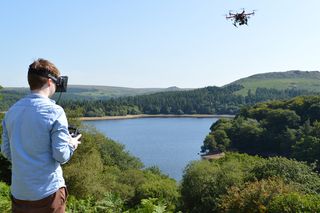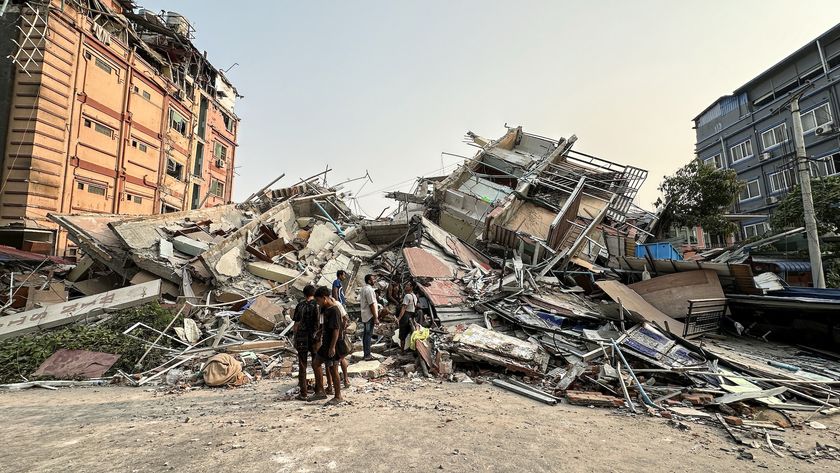
Drones are Fun, Until One Hits You In the Face

This article was originally published at The Conversation. The publication contributed the article to Live Science's Expert Voices: Op-Ed & Insights.
Mini drones are not yet appearing in our skies on a daily basis but they certainly are a rapidly growing trend. People can and do get hurt so we really need to help amateur pilots learn how to fly their new toys safely.
There are all kinds of exciting developments happening in this field and hobbyists are now able to pick up a device for relatively little money. But as more and more of these devices come onto the market, more grizzly images are popping up online to show what happens when people lose control.
My team and I have been experimenting with drones for some months, flying them over hard-to-reach heritage sites but, as our experience of deploying these platforms has increased, we have become increasingly concerned about how they can be used safely.
Many of the promises about what we will use drones for in the near future are just flights of fancy, especially given the limited payload capabilities of most of commercial off-the-shelf products, but the technology is certainly evolving fast.
Out of control?
The main limiting factor for a drone is often the untrained pilot at its helm. There have certainly been incidents in the recent past which demonstrate the consequences of human error, system failure, flying in inappropriate weather conditions and sheer incompetence.
Earlier this year, a resident of Barrow-in-Furness was prosecuted for flying a radio-controlled aircraft in restricted airspace over BAE Systems’ nuclear submarine facility. A similar incident occurred in May when a man was was questioned by the FBI for crashing a camera-equipped sUAV close to the Bridgeport Harbour Electricity Generating Station in Conneticut. No one was injured in either case but both represented pretty serious incidents in terms of flying within restricted airspace.
Sign up for the Live Science daily newsletter now
Get the world’s most fascinating discoveries delivered straight to your inbox.
There have been numerous reports of injuries, even fatalities, caused by loss of control of an sUAV and some pretty harrowing images can easily be found online. Reported cases include a bridegroom who was struck in the face by a quadcopter flown by an adventurous wedding photographer, and the crashing of a hexacopter into the grandstand at Virginia Motorsports Park, injuring five. The second half of 2013 was particularly bad, with fatalities in Texas, Korea and Brazil and the horrendous case of a 19-year-old who died instantly in a Brooklyn park when the blades of his radio controlled aircraft struck his head and neck.
Of course, there are rules and guidelines about drones. But when the Civil Aviation Authority tries to address the human factor in its guidelines, its efforts fall rather flat. Its warnings are far too generic and rigid to cope with a rapidly changing technological scene. It discusses the dangers of remote data feedback and stresses that it’s important for pilots to remain situationally aware, but the style of wording and absence of illustrated examples do little to emphasise the very real dangers of flying when non-expert pilots are in charge of a drone.
Having now experimented with a number of drones at historical sites, often in remote moorland or coastal regions, I find myself in strong agreement with those who call for regulations to be strengthened. Indeed, we have recently produced our own Standard Operating Procedures in an attempt to fill in the gaps evident in existing guidance.

Over the past 12 months alone, our hexacopter has evolved from a 2kg to 4kg payload capacity. Our students have, as a result, been able to experiment with different tools for the drones. One has been a camera that feeds video back to a headed mounted display worn by the pilot on the ground. This certainly generates impressive video but even our experienced pilot has been “drawn in” by the stunning picture quality, only to be alerted – just in time – to the appearance of the sUAV propeller blades in his field of view as the vehicle becomes progressively unstable.
Flying school
It is possible to take training courses for flying drones but these often tend to be aimed at those wanting to use sUAVs for professional or commercial work, as opposed to the hobbyist or academic researcher. It is clear that, as the stories of injuries, fatalities, property damage, invasion of privacy, trespass and airspace incursion multiply, the situation has to change, even though any change will, without doubt, be very unpopular with many hobbyists and retailers.
Some developers have started working on firmware modifications that would help pilots stop their drones from inadvertently flying into restricted airspace. This is a promising development, even if it might not be met with great enthusiasm from users, but much more needs to be done. Every drone sold needs to be registered and marked (perhaps even chipped) in some way so that it can be traced directly back to its owner if something goes wrong. There is no doubt that this will be difficult to enforce, especially as 3D printing technologies are increasingly being used to manufacture replacement components.
Drone pilots also need to submit to some form of basic competence assessment, such as through an app, and should then be granted a licence. Such an assessment could take the form of a test similar to those used to teach driving students about decision-making and observational skills.
sUAV simulator packages already exist, as do apps, but most fall short of teaching and evaluating the essential skills and awareness necessary for safe sUAV operations. We should focus on human-centred design issues from the start so that simulators can test reaction times, decision-making for flights in urban or sensitive areas, pilot distraction effects and other potential problems a pilot might face.
Of course, such tests would not replace professional courses but they would help to ensure that the growing number of pilots can fly their devices safely. Some might complain that these measures are over the top and totally unnecessary for something that is, after all, just a smaller version of a radio controlled helicopter. But just type “quadcopter injuries” into Google images and make your own mind up.
Robert Stone does not work for, consult to, own shares in or receive funding from any company or organisation that would benefit from this article, and has no relevant affiliations.
This article was originally published on The Conversation. Read the original article. Follow all of the Expert Voices issues and debates — and become part of the discussion — on Facebook, Twitter and Google +. The views expressed are those of the author and do not necessarily reflect the views of the publisher. This version of the article was originally published on Live Science.












